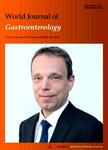Shift work aggravates metabolic syndrome development among early-middle-aged males with elevated ALT
Shift work aggravates metabolic syndrome development among early-middle-aged males with elevated ALT作者机构:Department of Occupational Medicine Tao-Yuan General Hospital Tao-Yuan 330-Taiwan China Institute of Occupational Medicine and industrial Hygiene College of Public Health National Taiwan University No. 17 Xu-Zhou Road Taipei 100 Yaiwan China College of Public Health and Nutrition Taipei Medical University Taipei 110 Taiwan China
出 版 物:《World Journal of Gastroenterology》 (世界胃肠病学杂志(英文版))
年 卷 期:2009年第15卷第45期
页 面:5654-5661页
核心收录:
学科分类:1002[医学-临床医学] 1010[医学-医学技术(可授医学、理学学位)] 100201[医学-内科学(含:心血管病、血液病、呼吸系病、消化系病、内分泌与代谢病、肾病、风湿病、传染病)] 10[医学]
主 题:Alanine aminotransferase Early middle aged Male Metabolic syndrome Shift work
摘 要:AIM: To examine whether shift work accelerates metabolic syndrome (MetS) development among early middle-aged males with elevated alanine aminotransferase (e-ALT).METHODS: A retrospective, observational followup study on MetS development at a 5-year interval was conducted using health examination data. Nine hundred and ninety six male employees not fulfi lling MetS criteria at screening were enrolled. Age, MetScomponents, liver enzymes, serological markers for viral hepatitis, abdominal ultrasound, insulin resistance status, lifestyles, and workplace factors were ***: The prevalence of elevated serum ALT ( 40 U/L, e-ALT) at baseline was 19.1%. There were 381 (38.3%) workers with long-term exposures to day-night rotating shift work (RSW). 14.2% of subjects developed MetS during follow-up. After 5 years, the workers with e-ALT had significantly unfavorable changes in MetS-components, and higher rates of MetS development, vs subjects with normal baseline ALT levels. Workers with both baseline e-ALT and 5-year persistent RSW (pRSW) exposure had the highest rate of MetS development. Also, e-ALT-plus-pRSW workers had a significant increase in MetS-components atfollow-up, compared with the other subgroups. After controlling for potential confounders, e-ALT-plus-pRSW workers posed a signifi cant risk for MetS development (odds ratio, 2.7; 95% confi dence interval, 1.4-5.3, vs workers without baseline e-ALT nor pRSW). CONCLUSION: We suggest that all early middle-aged male employees with e-ALT should be evaluated and managed for MetS. Particularly in terms of job arrangements, impacts of long-term RSW on MetS development should be assessed for all male employees having baseline e-ALT.



